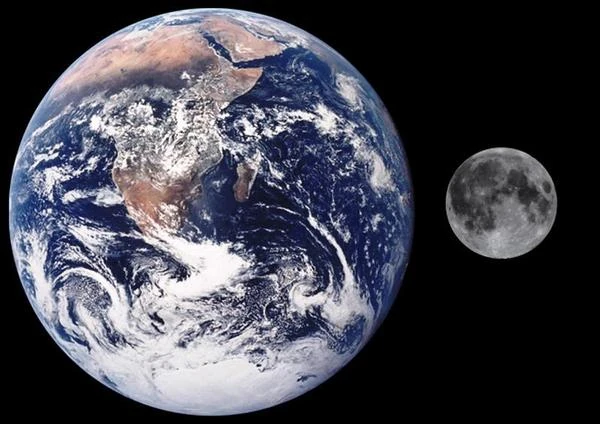
About 4.5 billion years ago, shortly after the formation of the Solar System, the primitive Earth collided with a Mars-sized body named Theia. This scenario, known as the Giant Impact Hypothesis, is today the most accepted explanation for the origin of the Moon. During this high-speed impact (≈ 10 km/s), an immense amount of material was ejected into Earth's orbit. Under the effect of tidal forces and gravitational aggregation, this material formed a debris disk that consolidated in less than 100 years to form our natural satellite.
Particle hydrodynamic simulations link the oblique impact to the chemical composition of the Moon. The total angular momentum of the Earth-Moon system is also a direct consequence of this event. The oxygen isotopes present on Earth and the Moon are practically identical, suggesting a common origin or a deep mixing of materials. Furthermore, the low proportion of iron in the Moon compared to Earth indicates that it did not form from a differentiated body with its own metallic core.
| Stage | Estimated Duration | Dominant Physical Mechanism | Reference |
|---|---|---|---|
| Earth-Theia Impact | < 1 day | Oblique collision at ~10 km/s | Canup & Asphaug (2001) |
| Formation of the debris disk | A few hours | Evaporation + orbital ejection | Ward & Cameron (1976) |
| Accretion of the Moon | < 100 years | Gravitational regrouping | Ida et al. (1997) |
| Orbital stabilization | 10⁵ – 10⁶ years | Earth-Moon tidal interactions | Touma & Wisdom (1994) |
Sources: Canup R. & Asphaug E., *Nature*, 2001 – Ward W. & Cameron A.G.W., *Lunar Sci. Conf.*, 1976 – Ida S. et al., *Nature*, 1997 – Touma J. & Wisdom J., *AJ*, 1994.
Although the giant impact hypothesis explains many orbital, chemical, and mechanical characteristics of the Earth-Moon system, it continues to be refined. Variants including multiple impacts or a different high-energy impactor are under study. The future of lunar missions, such as those of the Artemis program or the Japanese SELENE-2 mission, could provide additional data on the isotopic composition of the deep lunar crust, consolidating or revisiting this foundational cosmic scenario.